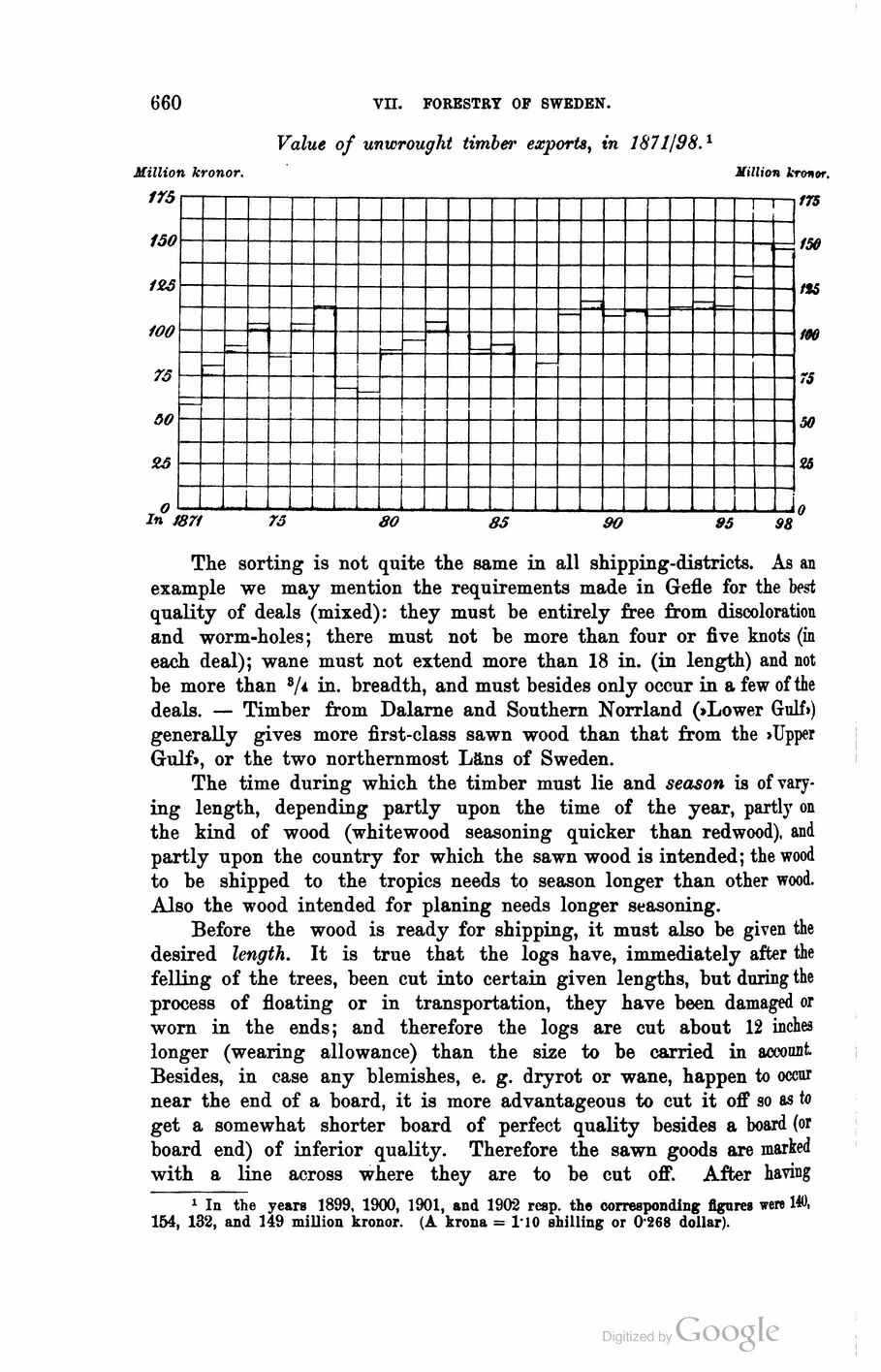
Full resolution (JPEG) - On this page / på denna sida - Second part - VII. Forestry - 2. Forest Industries. By E. Arosenius, Ph. D., Royal Central Bureau of Statistics, Stockholm - Sawing and export

<< prev. page << föreg. sida << >> nästa sida >> next page >>
Below is the raw OCR text
from the above scanned image.
Do you see an error? Proofread the page now!
Här nedan syns maskintolkade texten från faksimilbilden ovan.
Ser du något fel? Korrekturläs sidan nu!
This page has never been proofread. / Denna sida har aldrig korrekturlästs.
660 VII. FORESTRY OF SWEDEN’.
Value of unwrought timber exports, in 1871/98.1
The sorting is not quite the same in all shipping-districts. As an
example we may mention the requirements made in Gefle for the best
quality of deals (mixed): they must be entirely free from discoloration
and worm-holes; there must not be more than four or five knots (in
each deal); wane must not extend more than 18 in. (in length) and not
be more than s/i in. breadth, and must besides only occur in a few of the
deals. — Timber from Dalarne and Southern Norrland (»Lower Gulf»)
generally gives more first-class sawn wood than that from the »Upper
Gulf», or the two northernmost Läns of Sweden.
The time during which the timber must lie and season is of
varying length, depending partly upon the time of the year, partly on
the kind of wood (whitewood seasoning quicker than redwood), and
partly upon the country for which the sawn wood is intended; the wood
to be shipped to the tropics needs to season longer than other wood.
Also the wood intended for planing needs longer seasoning.
Before the wood is ready for shipping, it must also be given the
desired length. It is true that the logs have, immediately after the
felling of the trees, been cut into certain given lengths, but during the
process of floating or in transportation, they have been damaged or
worn in the ends; and therefore the logs are cut about 12 inches
longer (wearing allowance) than the size to be carried in account
Besides, in case any blemishes, e. g. dryrot or wane, happen to occnr
near the end of a board, it is more advantageous to cut it off so as to
get a somewhat shorter board of perfect quality besides a board (or
board end) of inferior quality. Therefore the sawn goods are marked
with a line across where they are to be cut off. After having
1 In the years 1899, 1900, 1901, and 1902 reap, the corresponding figures were 140,
154, 132, and 149 million kronor. (A krona = 1"10 shilling or 0’268 dollar).
<< prev. page << föreg. sida << >> nästa sida >> next page >>